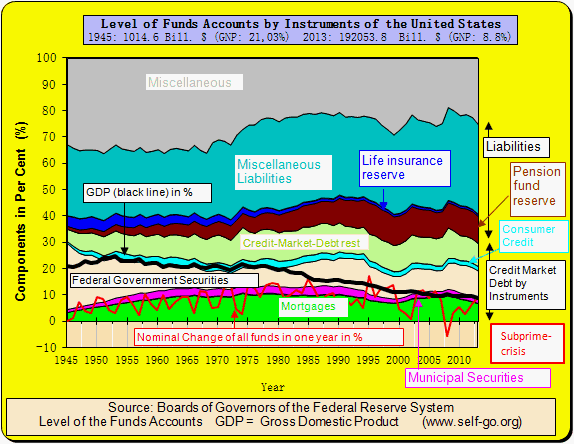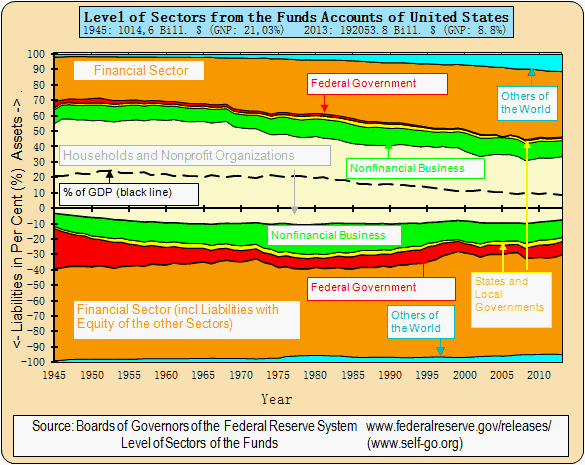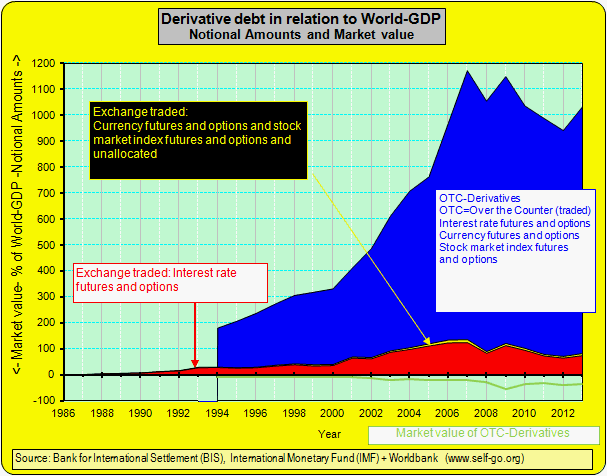
In consequence the interest rates of the bonds drop deeper and
deeper in relation to the inflation rate. Hence more and more
speculants will sell their bonds and buy stocks. The reactions of
more and more expensive stocks are cheaper and cheaper bonds. In
such a time all investors will be enthusiastic because they
"earn" without working. It is an era in which the
investors are prowd about their own cleverness and foreknowledge.
On the other side the debtors are also satisfied. Because they
can call in, that mean terminate their debts and make new
contracts with lower interest rates. When the rates of the stocks
rise the amounts of the debts must fall, because of their decreasing
interest rates.
The hausse will strengthen the hausse. And not only the boom is
strengthening the boom. There is an additional power which can
strengthen the booms.
The governments can strenghten the rights of the speculants and
the creditors and weaken the rights of the debtors in many kinds.
They can strenghten the rights of the stockowners and the
managements and weaken the rights of the workers. Especially with
deregulation and privatization of monopolized services the
government is able to promote the upper class. In this case the
management must invest more money for advertising of the
monopolized services. The growing number of stockowners and their
income is only a small part of the advantages of the upper class
of proprietors. In those times the managements will allow
themself to take higher salary and add their income with stocks
and stockoptions of their own company. On the other side the
class of working poor will increase. What the upper class takes to
much, for the lower class remains to less. The differential of
economical earning is increasing faster in relation to the
differential of the economical performance of the people. Both
differentials look like the parts of a scissor. If the
differential of the rich and poors is growing, it looks like an
on opening scissor. The inequity of wealth and income is a
constant partner of unemployment in capitalistic economies.

The governments have another possibility to strengthen the
rights of the speculants and to weaken the rights of their
contract partners. They can legalize socalled new financial
instruments. These are a special forms of debts. The amount of the
debt depends not only of the interest rate or the exchange rate.
The derivative debt is more than a contract between two contract
partners, because the worth of a derivative contract depends from
the value of strange property. It is like a guarantee for a
specific value of traded things. Such traded things may be
stocks, bonds, interest rates, exchange rates, indices of a
speficific selection of securities or risks. Sometimes the prices
of material things like the metal gold or mineral oil can be the base
values of derivative guarantees too.
It seems to be a very serious business, because everybody wishes
security. Even the speculants of bonds and stocks and of foreign
currencies should have security at their business. Therefore it
is usual that the the creditors of the derivative contract make
their contracts with other partners in order to minimize their
own risk. They do this like assurance companies who make additional
insurance
contracts with a reinsurances in order to minimize their risks.
But all this claims give the speculants more solvency for
additional speculative contracts and the calculation of the true
risk of insolvency from the creditor is more difficult. Everybody
wishes more ability to pay of course. But this method is a kind
without work. Nearly nobody does notice this kind of business,
because it is a growing business for the satisfaction of the
speculants.
The sum total of derivative debt was growing approximately
constant in the western economies at the last years of the 20th
century. Therefore it seems to stabilize all financial
transactions, financial savings and financial activities. The
international statistics of this mysterious forms of debt will be
published regularly from the Bank for International Settlement
(BIS) in Basel, Switzerland. The traders of derivative securities
learned to calculate the risks of such business in the era of
growth. A big crash, that means the implosion of a big
speculative bubble, is not possibible without an implosion of the
sum total of values from derivative debts.
